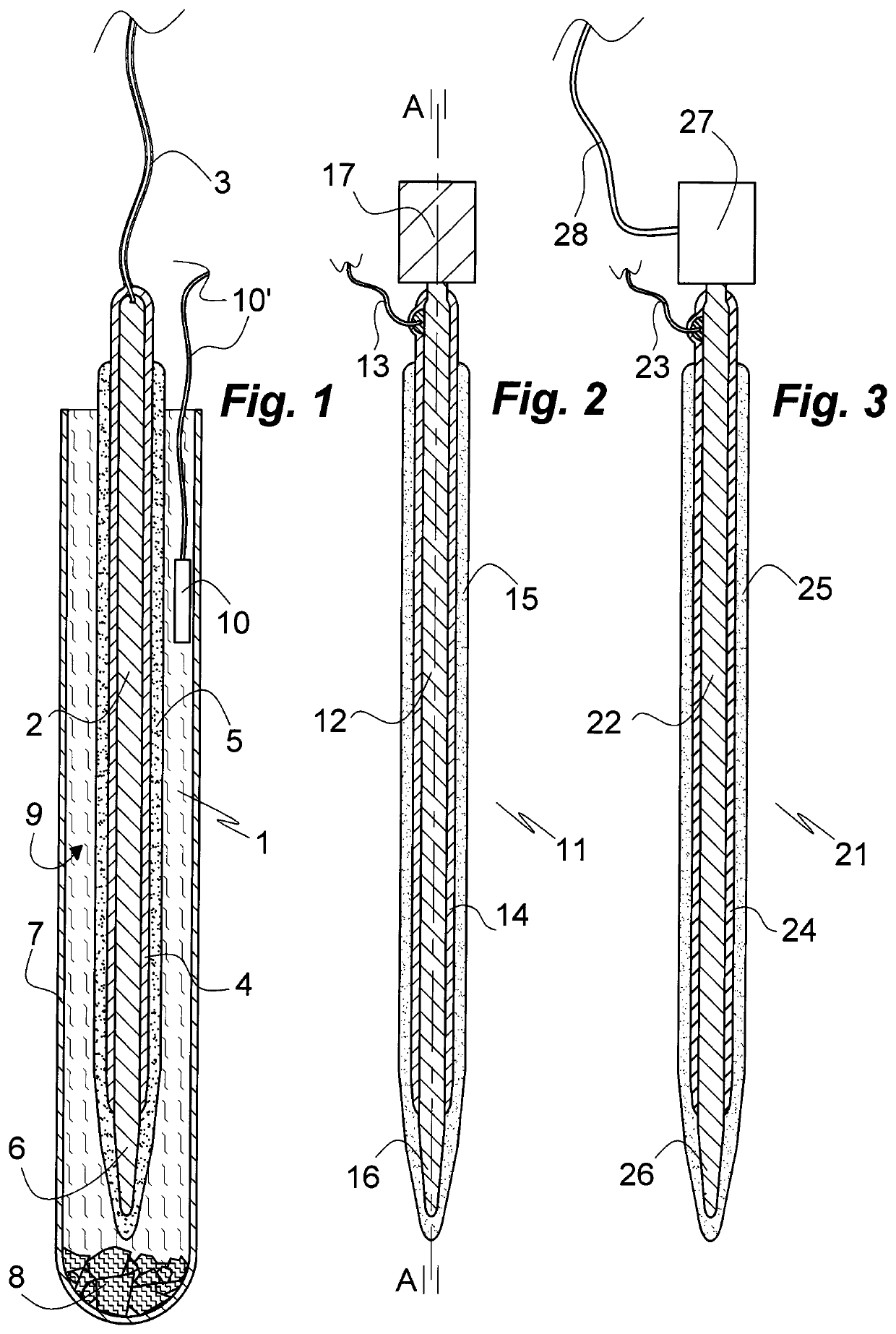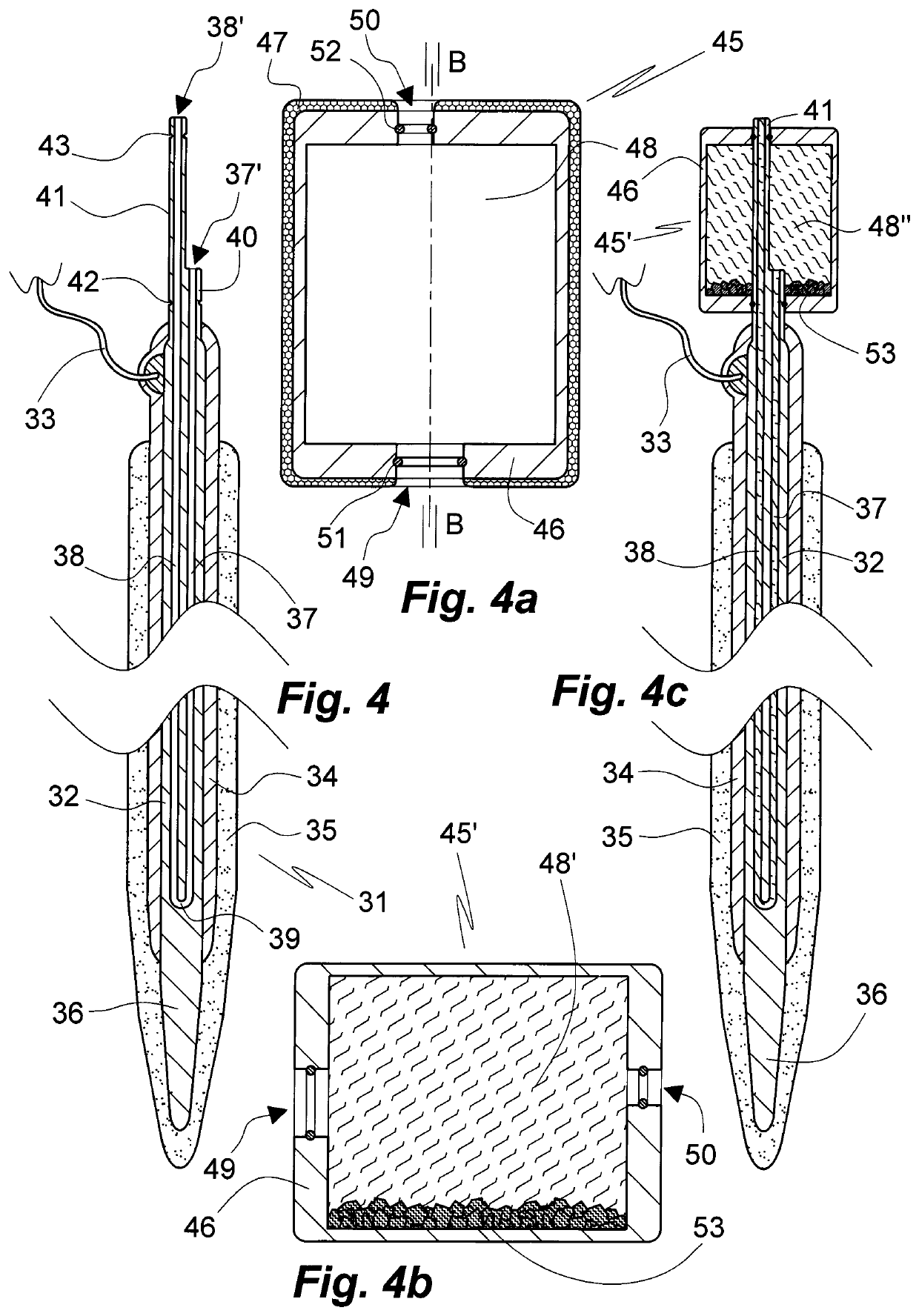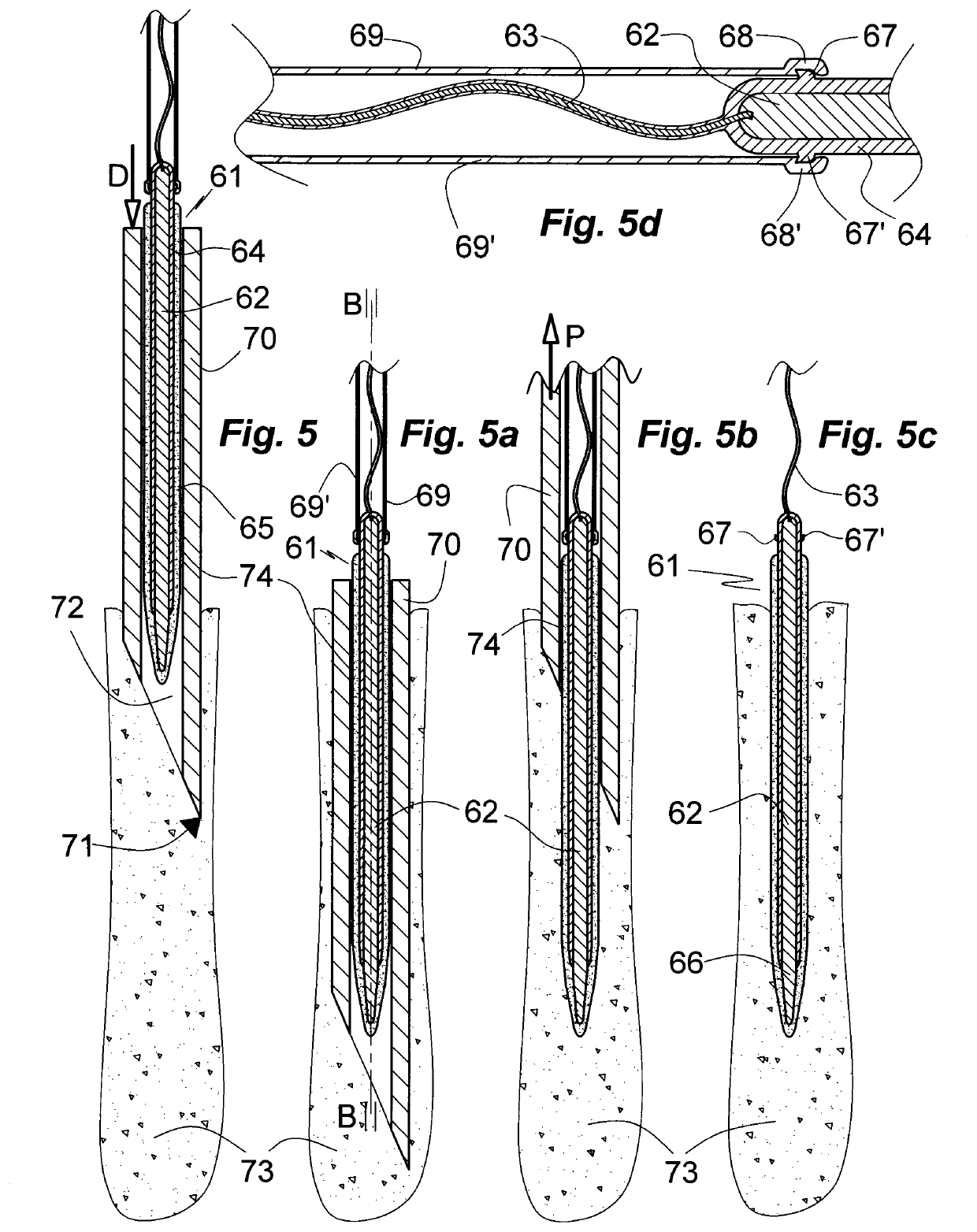Device for insertion into nervous tissue
a technology for nerves and vascular tissues, applied in the field of diagnostic and/or therapeutic devices for insertion into soft tissues, can solve the problems of accompanied damage to the tissue of insertion of microelectrodes or other devices into soft tissues, in particular nervous or endocrinological tissues, and achieve the effect of protecting the tissue from damage and lowering the temperature of soft tissu
- Summary
- Abstract
- Description
- Claims
- Application Information
AI Technical Summary
Benefits of technology
Problems solved by technology
Method used
Image
Examples
example 1
[0090]FIG. 1 illustrates a microelectrode of the art 1 comprising an oblong cylindrical metallic electrode body 2, for instance of silver, gold, platinum or iridium, with a narrowing distal tip 6 and a flexible electrical lead 3 attached to its distal end. Except for the tip 6 the electrode body 2 is electrically insulated by a layer 4 of a polymer material such as polyurethane or Parylene C. Except for a portion extending from the proximal end the electrode body 2 and the tip 6 is covered with a layer 5 of dry gelatin of a Bloom strength of 120. The electrode 1 is shown inserted in a cooling vessel 7 of the shape of a test tube with its distal tip 6 foremost. The vessel 7, which may be thermally insulated (not shown) is loaded with dry ice 8 disposed at the bottom thereof. The electrode 1 is cooled by gaseous carbon dioxide 9 evaporated from the dry ice 8. The temperature of the carbon dioxide 9 atmosphere in the vessel is monitored by a thermocouple 10; alternatively or additional...
example 2
[0092]The design of the microelectrode of the invention 11 shown in FIG. 2 in an axial section A-A substantially corresponds to that of the microelectrode 1 of Example 1 except for a cooling means in form of heat sink 17 attached to the electrode body 12 at its proximal end in a thermally communicating manner. Prior to implantation of the microelectrode 11 the heat sink 17 is cooled in combination with the electrode 11 or separately to a low temperature, such as the temperature to which the electrode 11 is cooled or to an even lower temperature or substantially lower temperature. With the heat sink 17 at a lower temperature than the electrode 11 heat flows from the electrode body 12 to the heat sink 17 thereby cooling the electrode 11 and thus, when being contacted by body fluid, delaying swelling and dissolution of the gelatinous or other swellable layer 15 on an insulating layer 14 covering most of the electrode body 12. Suitable heat sink materials comprise steel, copper, chromiu...
example 3
[0093]The design of the microelectrode of the invention 21 shown in FIG. 3 in an axial section corresponding to axial section A-A of the embodiment of FIG. 2 substantially corresponds to that of the microelectrode 11 of Example 2 except for a cooling means in form of a Peltier element 27 being attached to the electrode body 22 at its proximal end in a thermally communicating manner instead of a heat sink. The Peltier element 27 is energized via an insulated flexible electric lead 28. The microelectrode 21 comprises correspondingly disposed insulating and swellable layers 24, 25 on the electrode body 22, the narrowing distal terminal portion 26 of which is similarly free of insulation 24. The electrode body 22 is electrically connected with a power source (not shown) and / or an instrument for detecting voltage variations (not shown) by means of an electrically insulated flexible lead 23. Upon completion of the insertion procedure the cooled tissue can be brought to body temperature by...
PUM
 Login to View More
Login to View More Abstract
Description
Claims
Application Information
 Login to View More
Login to View More - R&D
- Intellectual Property
- Life Sciences
- Materials
- Tech Scout
- Unparalleled Data Quality
- Higher Quality Content
- 60% Fewer Hallucinations
Browse by: Latest US Patents, China's latest patents, Technical Efficacy Thesaurus, Application Domain, Technology Topic, Popular Technical Reports.
© 2025 PatSnap. All rights reserved.Legal|Privacy policy|Modern Slavery Act Transparency Statement|Sitemap|About US| Contact US: help@patsnap.com



